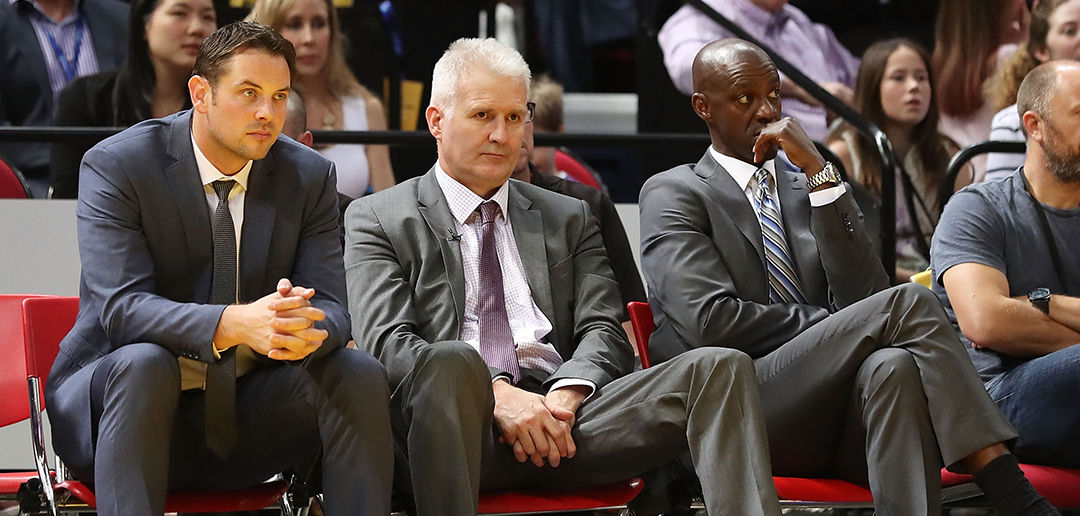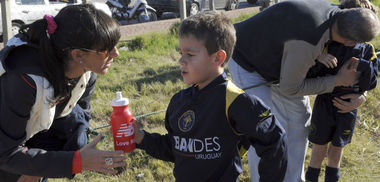For many people motivation is like an ocean tide, rising and falling based on circumstances of the present moment. The “source” of motivation can be tricky to find since every person deals with a unique set of external realities that impacts their mood, mindset, and behaviors in different ways. As coaches and leaders who aim to build teams that compete with the right motivations in mind, solving this motivational conundrum is critical to the difficult task of team-building over the course of a long season.
Any coach can attest that the journey of a season has inevitable twists and turns that are nearly impossible to predict with specific accuracy. However, there are unmistakable landmarks that every experienced coach is aware of. One of these landmarks usually comes after passing the halfway point in the season. Almost without fail, this specific point in the season is characterized by fatigue (mental and physical), energy-depletion, and weariness. If not handled well this can also be the greatest time of internal conflict, bickering, and finger-pointing. The adrenaline from the beginning of the season has worn off, while the finish line has yet to become a reality.
"I want to coach winning character!"
As a leader, how do you deal with the middle? The middle can be a time of lost purpose and lost perspective. It can be a time (especially when accompanied by several difficult losses) when the big picture is lost and selfishness abounds. Great leaders are able to stoke the fires of motivation by rekindling the flames of passion and purpose that allow their team to grow stronger together as opposed to splintering apart (during this disorienting middle). Weakly limping to the finish line is not a viable option for coaches who are committed to leading with excellence.
Here are three core principles of motivation (backed by scientific research) that will help you stoke the sparks of motivation in your team when it feels like they have lost their passion.
Demonstrate Improvement
Humans are wired for progress. Intrinsic motivation is created when we move towards an objective (or goal) and are able to see ourselves making progress. The process goes something like this: we decide on a goal, then we break that goal into smaller steps, and then we move toward our aim, accomplishing one small task at a time. Intrinsic motivation (or the process of mastery - i.e. getting better at something that matters to you) is the best long-term strategy for sustained motivation.
However, this theory on intrinsic motivation - i.e. the marginal gains you make towards an objective - is only helpful if you are aware of the progress you’re making along the way. This is the job of the leader: to demonstrate their team’s awareness of the improvement they have made over the course of a season.
Here’s the really tough part: how do you demonstrate improvement when your team is losing games? Coaches who lead with the bigger picture in mind must stay committed to the process of improvement (AND to demonstrating that improvement) regardless of the external results. Maintaining strong motivation in the midst of a losing season can be incredibly difficult. But, with some effort, a coach can come up with a number of creative ways to show their team how far they have come.
Increase Ownership
Successful cultures are full of owners, not renters. Anyone who has ever bought a home instantly understands this comparison. The difference between owners and renters is drastic. Responsibility is inherently part of ownership, and owners understand that passing the blame to someone else won’t fix the problem. So it is in sports. Coaches know the strength of the team is dependent on everyone’s ability to invest in the process and collectively own the outcome.
Owners are invested on a number of different levels. Every great team is comprised of people who take responsibility for their role in the success or failure of their team. The greater the amount of investment, the stronger the motivation. Here’s the thing about investment: the more someone puts into something, the harder they will fight when problems arise. It is the coach’s job to find ways to increase the “buy-in” or ownership in subtle ways that feed a constant stream of motivation.
When you have invested your time, talents, heart, and soul into something, it is nearly impossible to give-up when tough times come around. Teams that increase their ownership will be rewarded with sustained motivation.
Reconnect to Purpose
Here is what author James Kerr had to say about purpose and motivation:
“The deeper neurological truth is that stories do not cloak reality but create it, triggering cascades of perception and motivation...creating high-purpose environments flooded with signals that link present effort to a meaningful future, using a single story to orient motivation the way a magnetic field orients a compass to true north. This is WHY we work.”
Purpose is about connecting your day-to-day activities to something bigger than yourself while becoming a means to an end for others. Without purpose, the drudgery of our daily activities can take away life’s meaning and empty us of our motivation. Stories are an artistic tool that help us place our daily activities in the context of a larger narrative of meaning. They help us trace the lines of cause and effect between our daily routines and our larger purposes. Stories gives us the context to structure our days within the trajectory of a bigger aim.
Leaders that can skillfully communicate their team’s story in a manner that emphasizes the “bigger picture” will help their team stay connected to their purpose. Coach’s must search for creative ways to continuously reconnect their teams to their bigger purpose. Motivated teams are always purposeful teams.
For specific ideas on how to help your team demonstrate improvement, increase ownership, and connect to purpose feel free to send me an email at quinn.mcdowell@aretehoops.com














